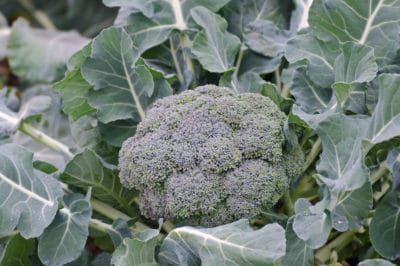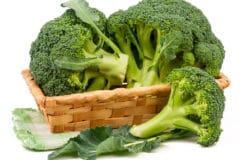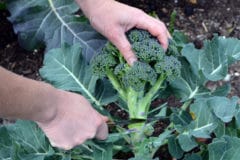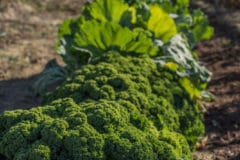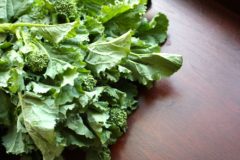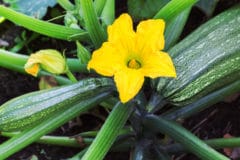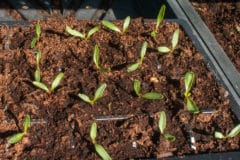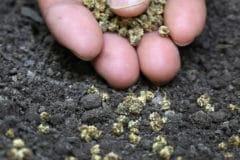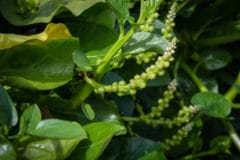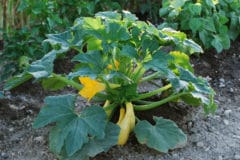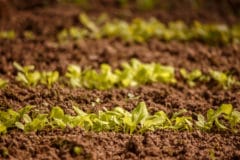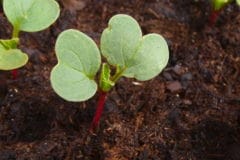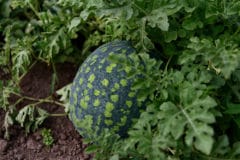What are the different types of broccoli?
Broccoli comes in several types: One type has a long growing season of 90 to 120 days or longer, and another type has a short growing season of 40 to 90 days. In addition, broccoli varieties include cultivars which form dense flower heads and sprouting types which produce elongated flower shoots, which are typically harvested and eaten along with small leaves.
Heading and sprouting types of broccoli are both available in long and short growing season cultivars. Which type is best to grow depends on which season you plant your broccoli in and what you prefer eating.
What are some popular broccoli cultivars?
Popular short-season, heading broccoli cultivars include:
- Blue Wind
- Gypsy
- De Cicco
- Arcadia
- Calabrese
Some long-season, spouting cultivars are:
- Santee
- Purple Sprouting
- Red Fire
Raab rapini is a fast-growing, sprouting broccoli variety.
When is the best time to plant broccoli?
Broccoli is a cool season crop, and it grows best when daytime air temperatures are between 60ºF (15.5ºC) and 75ºF (23.8ºC). If daytime summer temperatures in your area stay under 80ºF (26.6ºC), you can grow broccoli in the summer. If your region has hot summers, plant broccoli in the early spring or early fall.
In most locations, long-season broccoli cultivars do well when planted in the fall and harvested in early spring. Short-season varieties do well when planted in early spring and harvested before summer temperatures are over 80ºF (26.6ºC).
However, broccoli is the sweetest when it comes to maturity while daytime temperatures are still cool.
How do you start broccoli from seed?
You can plant broccoli seeds directly in the garden when soil temperatures are above 50ºF (10ºC). When directly sown in garden soil, broccoli seeds take between 10 and 20 days to germinate.
Starting broccoli seeds in a sunny location indoors or in a greenhouse leads to faster germination and a higher germination rate. Broccoli seeds germinate in about 7 to 10 days when soil temperatures stay between 70ºF and 85ºF (21ºC and 29.4ºC).
Plant seeds about 1/2 inch (1.27cm) deep in the soil, and keep the seed bed moist at all times.
How much sun do broccoli plants need?
Most varieties of broccoli do best when planted in full-sun, as long as temperatures stay cool. However, broccoli can also grow well in partial shade, and if daytime temperatures are warm, planting in an area with some shade helps prevent premature flowering and produces a sweeter crop.
What kind of fertilizer does broccoli need?
Broccoli plants thrive in fertile soil with ample nitrogen, a good balance of potassium, phosphorous, and trace minerals, and a soil pH of 6 to 6.5. You can add nitrogen and increase soil fertility in several ways:
- Add compost or decomposed animal manure to the soil before planting.
- Side-dress the crop with compost as it grows.
- Mix blood meal, fish meal, or alfalfa meal into the soil before planting.
- Feed the plants with diluted fish emulsion each week until they begin forming heads or flower shoots.
- Plant a nitrogen-fixing cover crop, such as vetch or bell beans, the season before planting your crop, and turn the cover crop residue into the soil to add nitrogen and organic matter.
How far apart should plants be spaced?
Broccoli plants reach a height of 1.5 feet (.46 meters) to 3 feet (.91 meters) when they are fully-grown. In order to give the plants adequate access to light and nutrients, space them at least 18 inches (45.7 cm) apart in rows spaced at least 2.5 feet (.76 meters) apart.
How much water does broccoli need?
Broccoli plants need a continually moist soil to thrive. When there is no rain, check the plants daily and apply water whenever the soil surface dries out. Keep on watering the plants as the heads or shoots develop, or the plants may flower prematurely or develop a stronger flavor.
When is broccoli ready to harvest?
Broccoli harvest dates depend on which variety of broccoli you are growing. Short-season cultivars are ready for harvest in as little as 45 days after seedlings have been transplanted or seeds have fully germinated. Long-season varieties take between 90 and 120 days to reach maturity after transplanting or germination. Some varieties take as long as 200 days until they are ready for harvest.
Heading types of broccoli are ready for picking when the flower head is between 4 inches (10.2cm) and 8 inches (20.3cm) in diameter. The ultimate size depends on which variety you are growing, and the seed package or nursery tag gives you this information.
Sprouting broccoli is ready when shoots are approximately 6 inches (15cm) to 10 inches (25cm) in length and flower buds are tightly closed and still dark green.
What pests and diseases are common with broccoli?
Aphids are a common pest on broccoli plants. Check the plants frequently for aphid infestations and use a strong spray of water to remove them from the plants, if they are a problem. Insecticidal soap is also effective for control of aphids and other soft bodied insects.
Several species of caterpillar are also frequent pests in broccoli. Look for small, green worms or clusters of yellow eggs on the underside of leaves or white, grey, or brown moths near the plants. Caterpillars can do considerable damage to broccoli plants by eating holes in the leaves and flower heads. Control caterpillars by picking them off by hand or spraying the plants with Bacillus thuringiensis, a beneficial bacteria used for pest control.
What are good companion plants for broccoli?
Broccoli grows well together with:
- Onion
- Celery
- Potato
- Beets
- Other plants in the Brassica family, such as kale, cabbage, and Brussel sprouts.
Avoid planting broccoli close to all types of beans and squash.
How can broccoli be stored?
After harvest, put broccoli in a perforated plastic bag and keep it refrigerated for up to 7 days before using.
Broccoli also does well frozen for longer storage. First drop the broccoli in boiling water for about one minute, then immersing the blanched broccoli in cold water until it is chilled and then freezing it in freezer bags.
Remove the air from the open bag by submerging it in a basin of water until the water is just below the opening. Then seal the bag and store it in the freezer for as long as three months.
